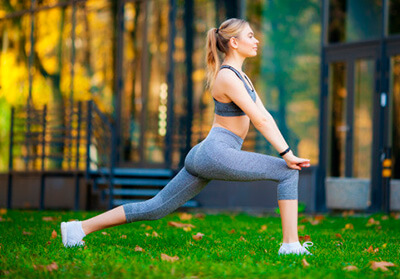
Libido and Physical Exercise
Gender roles, mental health, and sexuality were once thought taboo subjects, and while society has become more open and progressive in recent years, there’s one thing many people still find it difficult to discuss: their libido. The conversation about our sex drives is often ignored, leading to people misunderstanding their own sexual desire, as well as the desires of others. The result? Lots of people have the wrong idea about what’s “normal,” and that’s something that needs to be addressed.
Everyone’s libido is different. Some people have a higher sex drive, some have a lower one. However, the medical community has noted that there’s a point when the sex drive goes from being “low” to being “weak,” and that’s something that can cause frustration, depression, and strained – or broken – relationships. If your sex drive isn’t what you want it to be, there are lots of ways people can address it, and one of the ways being explored is startlingly simple: physical activity. But can getting more exercise really help your sex drive?
The medical consensus is that physical activity has numerous physiological and mental benefits. Beyond merely keeping our muscles and bones in shape, it has other effects that are more subtle. It improves blood flow, increasing blood circulation and strengthening the heart. It triggers the release of chemicals in the brain that are associated with feelings of happiness and calm, relieving mental tension and elevating the mood. Exercising can also help us regulate our sleep cycles and improve our bodies’ metabolism, increasing and regulating our energy levels.
Study after study shows that exercise is more than a way to lose weight and gain muscle. Far from being a purely aesthetic activity, it has definite effects on our general health. That means it has wide-ranging benefits that can improve lots of different parts of our lives … including the libido.
Some might wonder how exactly these benefits coincide. What do the physiological effects of exercise have to do with the sex drive? Well, despite the fact that our libido is a complicated system, affected by numerous biological and psychological processes, we can say for sure that there are several physiological states associated with both exercise and improved sex drive that overlap:
-
Improved mood. As a low libido is commonly seen together with depression and feelings of anxiety, exercise is the perfect antidote. With exercise comes an increase in the chemicals serotonin, dopamine, and norepinephrine, which make you feel better in general and could offset any emotional problems keeping you from feeling frisky.
-
Better sleep. Poor sleep has also been linked with a drop in the sex drive, due to increased fatigue and mood problems which can cause tension with sexual partners. Since exercise can improve your sleep quality by regulating your circadian rhythms and relieving the tension that can cause insomnia, an added benefit might be your libido.
-
Higher energy levels. If you don’t have any energy, you might not feel up to the job, and that’s another way exercise might help. Because exercise helps the metabolism and can give us more energy, that means working out can help you have the energy to do more than simply lifting weights.
There are more benefits to physical activity that coincide with improving the sex drive, more than we could list here. But the evidence shows that there’s a definite connection between the two, and that’s why we need to take it seriously. People who wonder what happened to their libido might notice that they’ve been less active recently, or that their sex drive goes up the more physically active they are.
Additionally, we should clarify that this isn’t a panacea. If you’re suffering from a low libido, taking up running isn’t guaranteed to solve the problem by itself. It may require a multi-pronged approach that looks at all parts of your life, from your diet and sleep pattern to what (if any) prescription drugs you’re taking, many of which come with side effects that can lower the libido.
There are two big approaches when it comes to treating our physical problems. One is going right for whatever prescribed drug-based treatment is. The other is looking at the rest of the person’s life and seeing whether some lifestyle adjustments might do the trick just as well – and without serious side effects or high price tags. Medical professionals that have their patient’s best interests at heart will of course combine this approach, going with an integrative approach which, if it doesn’t work, leaves the drug-based choice as the only logical remaining avenue. The idea is that we should fix whatever existing problems might be affecting our health first, before resorting to medicines. Looking at exercise’s effect on libido is an example of this in action.